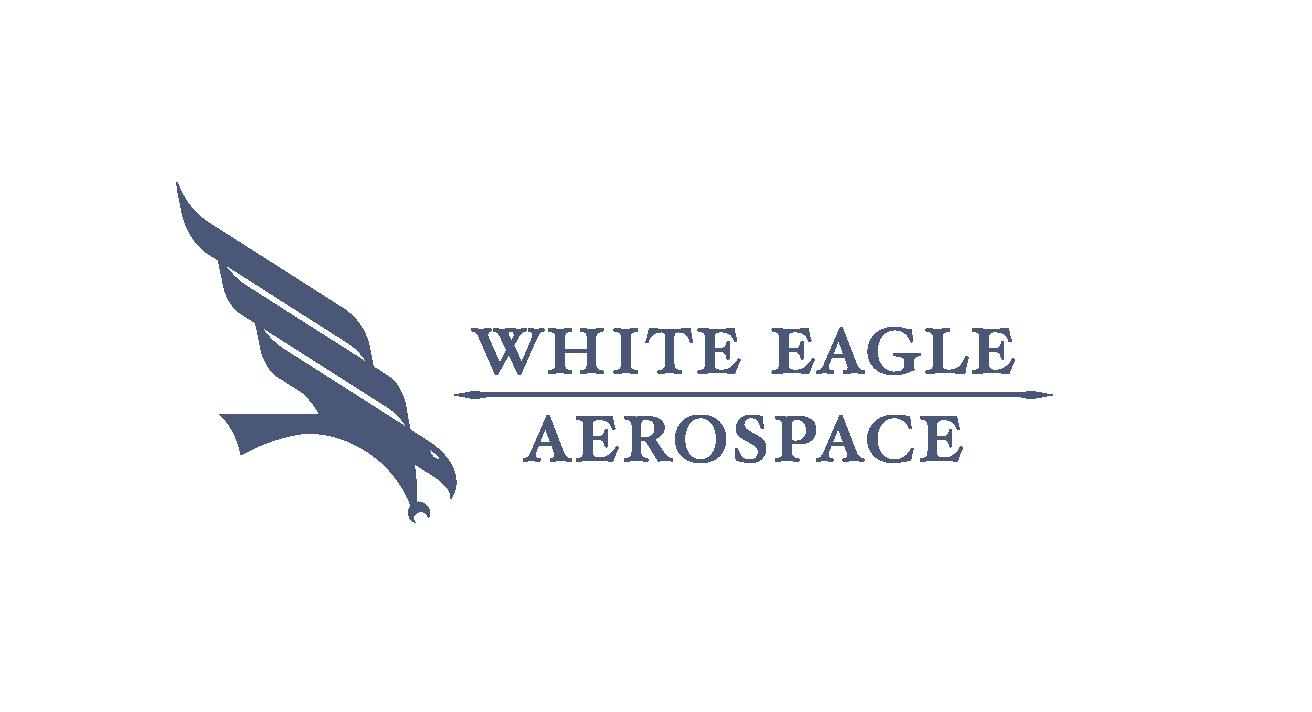The B-2 Spirit: So Stealthy, It Ducks Radar Like a Seagull 🛸
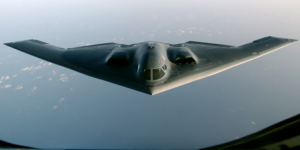
How can something as massive as a 172-foot-wide bomber sneak past some of the world’s most advanced radar systems?
How does a multibillion-dollar aircraft leave a radar signature smaller than a ping pong ball?
Welcome to the world of the B-2 Spirit Stealth Bomber—an engineering marvel that redefined what it means to fly under the radar… literally.
Wait… Less Detectable Than a Bird? 🐦
Yep, you read that right.
Despite its size, the B-2 reflects less radar energy than a seagull. That’s not science fiction—it’s aerospace engineering at its finest. Thanks to its flying wing design, radar-absorbing materials, and strategic heat shielding, the B-2 can cruise through enemy airspace virtually undetected.
🏓 Its radar cross-section? Roughly the size of a ping pong ball.
🤯 How is that even possible?
What Makes the B-2 So Invisible?
🔍 Curious how the B-2 pulls off this vanishing act? Here’s a breakdown:
-
Is it the shape? Absolutely. Its smooth, curved wing eliminates the sharp angles that usually reflect radar waves.
-
What about materials? Specialized RAM (Radar Absorbent Material) soaks up radar energy instead of bouncing it back.
-
Engines? Hidden. Buried deep inside with covered exhaust ports to avoid detection by heat-seeking tech.
This isn’t just stealth—it’s strategic invisibility designed from the ground up.
🕶️ What’s the Big Deal About Being Stealthy?
Imagine flying deep into enemy territory—and they don’t even know you’re there. The B-2’s stealth enables it to deliver precision strikes, gather intel, and support missions that would be impossible for traditional aircraft.
So here’s a question:
In an age of advanced air defense systems, can any other aircraft match what the B-2 can do?
––––––––––––––––––––––––––––––––––––––––––––––––––––––––––––––––––
🛡️ Can Anything Match the B-2?
Even after 30+ years in service, the B-2 Spirit is still in a league of its own.
Other aircraft like the F-35 or the upcoming B-21 Raider offer stealth features, but none combine long-range, heavy payloads, and radar evasion like the B-2.
No other bomber today can fly as far, hit as hard, and stay as hidden.
For now, the B-2 remains the stealth benchmark—and the sky’s quiet champion.
🦅 A Legacy That Still Leads the Skies
If you love aerospace, stealth tech is where science meets strategy. And the B-2? It’s still one of the most advanced and secretive platforms in existence—even decades after its debut.
It challenges what we think is possible.
It pushes the limits of material science, aerodynamics, and military engineering.
It asks: What else can we make invisible?
🧠 Want more aerospace mind-benders?
Come explore the bleeding edge of flight science with us at White Eagle Aerospace.
🚢 USS Carl Vinson & F-35C Lightning II: Projecting Naval

Power in the Red Sea
As global tensions simmer in key maritime corridors, the United States Navy is reinforcing its presence in one of the world’s most strategically vital waterways: the Red Sea. Leading this mission is the USS Carl Vinson (CVN-70), accompanied by the cutting-edge F-35C Lightning II—America’s most advanced carrier-based stealth fighter.
This deployment highlights the seamless integration of air and sea power, projecting strength, ensuring maritime security, and maintaining stability in a region crucial to global trade and geopolitical interests.
✈️ The F-35C Lightning II: The Navy’s 5th-Generation Force Multiplier
As the carrier variant of the Joint Strike Fighter program, the F-35C is engineered specifically for maritime operations. It features:
-
🔹 Foldable wings for carrier deck operations
-
🔹 Larger wingspan and landing gear designed for catapult launches and arrested landings
-
🔹 Increased fuel capacity and range for deep-penetration strike missions
-
🔹 Stealth capabilities and advanced sensor fusion for unmatched situational awareness
The F-35C is not just a fighter—it’s a data node, sharing real-time information with surface ships, other aircraft, and ground forces, creating a unified combat picture across domains.
⚓ USS Carl Vinson (CVN-70): A Floating Fortress
The USS Carl Vinson, a Nimitz-class nuclear-powered aircraft carrier, is a formidable presence in any theater. With over 60 aircraft onboard, including F/A-18 Super Hornets, E-2D Hawkeyes, and now the F-35C, it represents a multi-mission power projection platform.
Key capabilities include:
-
🛡️ Integrated air defense and strike operations
-
⚙️ Rapid deployment of carrier strike group assets
-
🌐 Forward presence to support allies and deter adversaries
-
🔋 Nuclear propulsion for sustained, high-endurance missions
In an era of contested domains, the Carl Vinson remains a symbol of U.S. naval dominance and readiness.
🌍 Securing the Red Sea: Why It Matters
The Red Sea is more than a waterway—it’s a global artery. Nearly 10% of global trade transits through this region via the Bab el-Mandeb Strait, connecting the Mediterranean to the Indian Ocean. Instability in this region threatens the free flow of commerce and access to critical energy supplies.
By deploying advanced naval assets like the Carl Vinson and the F-35C, the U.S. Navy:
-
✅ Strengthens maritime domain awareness
-
✅ Deters hostile threats and non-state actors
-
✅ Supports freedom of navigation operations
-
✅ Reinforces regional partnerships and interoperability
🔍 A Glimpse Into the Future of Naval Aviation
This mission represents more than just presence—it reflects a shift in how 21st-century naval warfare is being conducted. Platforms like the F-35C bring stealth, connectivity, and precision into environments that demand both technological superiority and tactical agility.
With adversaries developing anti-access/area-denial (A2/AD) strategies, the synergy between next-gen aircraft and modern carriers ensures that U.S. forces retain air superiority and operational reach wherever they’re needed most.
🧭Strategy Meets Technology
The deployment of the USS Carl Vinson and its air wing—now enhanced by the F-35C Lightning II—demonstrates how the U.S. Navy is evolving to meet modern threats with unmatched capabilities and forward-thinking strategy.
This operation is a powerful reminder that the intersection of engineering excellence, operational readiness, and geopolitical awareness is where aerospace and naval innovation truly shine.
📢 Join the Conversation
What do you think about the evolving role of naval aviation in global security? Share your thoughts in the comments below.
🚀 A Bear, a Supersonic Jet, and a Historic Ejection: The
Untold Story of Yogi and the B-58 Hustler
On March 21, 1962, the U.S. Air Force conducted one of the most unusual—and groundbreaking—tests in aerospace safety history. At the center of this mission? Not a pilot, not a mannequin… but a black bear named Yogi.
This remarkable event was part of a critical effort to validate the safety of ejection systems at supersonic speeds, specifically for the Convair B-58 Hustler, the Air Force’s first operational supersonic bomber.
✈️ The Mission
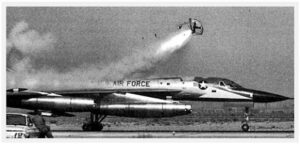
-
Aircraft: Convair B-58 Hustler
-
Speed: Approximately Mach 1.3 (870 mph)
-
Altitude: 35,000 feet
-
Objective: Test the survivability and performance of a supersonic escape capsule
The B-58, with its sleek delta-wing design and capability to exceed Mach 2, posed unique challenges for pilot safety. Traditional ejection seats were insufficient at such high speeds and altitudes. To address this, engineers developed a fully enclosed ejection capsule—a major leap forward in aircrew protection.
🐻 Why Use a Bear?
To conduct a realistic and biologically relevant test, the Air Force needed a subject that closely matched the size, weight, and physiological response of a human pilot. A black bear—nicknamed Yogi—was selected due to its mass and tolerance for high-stress environments.
Yogi was securely placed in the escape capsule and flown aboard the B-58 to test conditions. At altitude, the capsule was ejected at supersonic speed, initiating a sequence of shock-absorbing, parachute-deploying, and landing systems.
🌟 The Outcome
The test was a resounding success. Yogi survived the supersonic ejection, and the capsule’s systems performed as designed, validating the technology. This momentous event proved that ejection from a high-speed aircraft could be safe and survivable, paving the way for future innovations.
🛡️ Lasting Impact on Aerospace Safety
Yogi’s historic ride contributed to several major advances in pilot survivability:
-
✅ Validated ejection capsule design for high-speed bombers
-
✅ Improved shock absorption technology
-
✅ Laid the groundwork for zero-zero ejection seats—capable of safely ejecting at zero altitude and zero airspeed
Though unconventional, this test was a critical moment in aerospace safety development. It also highlights the extraordinary lengths engineers have gone to in order to protect lives in extreme flight conditions.
👨✈️ A Legacy of Innovation
Today, advanced ejection systems—some direct descendants of that 1962 test—continue to save pilots’ lives across the globe. The story of Yogi the bear may sound like aviation folklore, but it remains a testament to creative problem-solving, engineering courage, and the pursuit of safer skies.
✈️ Breaking the Sound Barrier Again: Meet Boom
Supersonics’ XB-1
The golden age of supersonic flight is making a comeback—cleaner, faster, and smarter than ever. With the unveiling of its experimental demonstrator, XB-1, Boom Supersonic is poised to reshape the future of commercial air travel.
Imagine flying from New York to London in just 3.5 hours, all while significantly reducing your carbon footprint. This isn’t science fiction—it’s the next chapter of high-speed aerospace innovation.
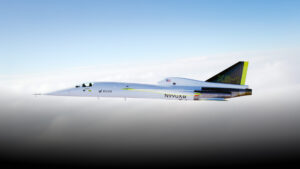
🚀 Introducing the XB-1 Supersonic Demonstrator
Known as the “Baby Boom,” the XB-1 is a scaled prototype designed to validate technologies and aerodynamic principles that will power Boom’s flagship supersonic airliner, the Overture.
Key Features of XB-1:
-
🔹 Speed: Designed for Mach 1.7 (approximately 1,300 mph)
-
🔹 Power: Equipped with three General Electric J85 engines
-
🔹 Size: 71 feet long, featuring a sleek carbon-composite airframe
-
🔹 Sustainability: Runs entirely on 100% sustainable aviation fuel (SAF)
-
🔹 Design: Optimized for low drag, high aerodynamic efficiency, and stable supersonic performance
The XB-1 recently completed ground testing and is now preparing for its first flight—marking the first independently developed supersonic jet since the Concorde era.
🌱 Supersonic, But Sustainable
One of the most groundbreaking aspects of the XB-1 is its commitment to sustainability. Unlike the Concorde, which was notorious for high fuel consumption and environmental impact, Boom is prioritizing green flight from the ground up.
Using SAF not only reduces lifecycle emissions by up to 80%, but it also sets the tone for a future where speed and environmental responsibility are no longer at odds.
🛫 Paving the Way: Boom Overture
The XB-1 is just the beginning. Its ultimate purpose is to validate the technology that will drive Boom’s commercial airliner, Overture, projected to fly by the early 2030s.
Overture will:
With customers already including United Airlines and interest from the U.S. Air Force, Boom is building not just an aircraft—but a new era in aviation.
🔧 Why It Matters
The XB-1 represents more than a return to speed—it’s a redefinition of aerospace possibility. For engineers, scientists, and aviators, it showcases:
-
The return of high-speed civil flight
-
Major advancements in materials science and fluid dynamics
-
Viable paths to net-zero aviation through fuel and design innovations
This isn’t just about flying faster—it’s about flying smarter, cleaner, and with purpose.
🌍 The Future of Flight Is Supersonic—Again
With XB-1 preparing to take flight and Overture on the horizon, Boom Supersonic is leading a renaissance in aerospace engineering. For those passionate about pushing boundaries and rewriting what’s possible in the sky, this is a front-row seat to history in the making.
Stay tuned—because the sonic boom is coming back, and this time, it’s bringing the future with it.
Eileen Collins & STS-63: A Historic Leap for Women in Space
A Defining Moment in Aerospace History
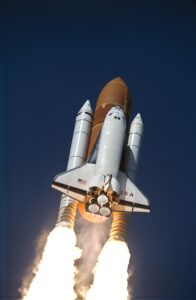
On February 3, 1995, NASA’s Space Shuttle Discovery (STS-63) lifted off from Kennedy Space Center, marking a milestone in space exploration. This mission wasn’t just another routine flight—it was a mission of firsts, breaking barriers and forging new paths in international collaboration.
Eileen Collins: The First Female Space Shuttle Pilot
The STS-63 mission was historic as it introduced Eileen Collins as the first female pilot of a Space Shuttle. A highly accomplished Air Force test pilot and astronaut, Collins’ achievement was more than just a personal victory; it was a testament to the growing opportunities for women in aerospace.
Collins had already paved the way in her military career, becoming the first female instructor pilot at the Air Force’s Test Pilot School. Her role as pilot of Discovery in 1995 was a natural next step in her journey, proving that gender was no barrier to leadership in space.
A Pioneering Rendezvous with Mir
Beyond Collins’ achievement, STS-63 was also a critical step in international space cooperation. The shuttle performed a close rendezvous with the Russian Mir space station, a move that set the stage for the International Space Station (ISS) partnership in the years to come.
The maneuver was a delicate and precise operation, demonstrating NASA’s ability to work closely with Russian space agencies. It symbolized a new era of post-Cold War collaboration, bringing the U.S. and Russia together in the shared pursuit of scientific advancement.
The Legacy of STS-63
Eileen Collins went on to break even more barriers, becoming the first female Space Shuttle commander on STS-93 in 1999. Her leadership and dedication continue to inspire young women pursuing careers in STEM, aviation, and space exploration.
STS-63 was more than a mission; it was a statement—a declaration that space belongs to everyone, regardless of gender or nationality. Every milestone like this one reminds us that determination, skill, and innovation will always push humanity forward.
🚀 Here’s to the pioneers of the past and the explorers of the future! 🌍✨
Soaring Through Time: The Historic Apollo 11 Mission

SEO Meta-Description: Explore the captivating history of the Apollo 11 mission, the groundbreaking event that landed humans on the moon for the first time. Discover key moments, challenges, and triumphs of this iconic aerospace achievement.
When one thinks about historic moments in aerospace history, the Apollo 11 mission stands out as a monumental achievement. It was a time when the impossible became possible, thanks to the relentless pursuit of knowledge and exploration. Let’s dive into the details of this captivating journey that forever changed humanity’s relationship with the cosmos.
The History Behind Apollo 11
In the wake of the Cold War and the fierce competition of the Space Race, the United States set its sights on a bold new frontier: the moon. It was President John F. Kennedy who, in 1961, threw down the gauntlet with his famous speech, declaring that America would land a man on the moon before the decade was out. This audacious goal set the stage for one of the most remarkable achievements in human history.
The Road to Apollo 11
- NASA’s Formation: Before Apollo 11 could take flight, NASA had to be established. Formed in 1958, NASA became the epicenter of America’s space exploration efforts.
- Project Mercury and Gemini: Prior to Apollo, these programs were essential in developing the technology and skills necessary for lunar exploration.
- Apollo Program Initiation: Launched in 1961, the Apollo program aimed to fulfill Kennedy’s ambitious vision, culminating in the first manned moon landing.
The Apollo 11 Mission
On July 16, 1969, the world watched in awe as the Saturn V rocket roared to life, launching Apollo 11 into the heavens. Aboard were three brave astronauts: Neil Armstrong, Edwin “Buzz” Aldrin, and Michael Collins. Their mission? To accomplish what no human had done before—set foot on the lunar surface.
- Launch and Journey: The Saturn V, a marvel of engineering, carried the crew safely into space, setting them on a trajectory toward the moon.
- Lunar Orbit and Landing: On July 20, 1969, history was made. Armstrong and Aldrin descended in the lunar module, Eagle, while Collins remained in orbit. As Armstrong stepped onto the moon, his words echoed through history: “That’s one small step for man, one giant leap for mankind.
- Exploration and Experiments: The astronauts spent over 21 hours on the lunar surface, conducting experiments, collecting samples, and capturing iconic photographs.
- Return to Earth: After their successful mission, the crew safely splashed down in the Pacific Ocean on July 24, 1969, greeted as heroes.
The Impact of Apollo 11
The Apollo 11 mission wasn’t just about reaching the moon; it was a testament to human ingenuity, perseverance, and the spirit of exploration. Its impact resonated far beyond the scientific community, influencing culture, politics, and inspiring generations.
Cultural and Scientific Advancements
- Technological Innovation: The mission spurred advancements in computer technology, materials science, and telecommunications, with many innovations finding their way into everyday life.
- Global Unity: The achievement was a unifying moment for humanity, showcasing what could be accomplished through cooperation and shared goals.
- Scientific Knowledge: Apollo 11 significantly advanced our understanding of the moon and space, providing invaluable data that continues to inform research today.
The history of the Apollo 11 mission is a beacon of human achievement, a story of courage, innovation, and the relentless pursuit of dreams. As we look back on this pivotal moment in aerospace history, we are reminded of the limitless possibilities that await when we dare to reach for the stars. Apollo 11 not only fulfilled a national goal but also inspired a global audience, proving that when humanity unites in pursuit of knowledge, the sky is not the limit—it’s just the beginning.
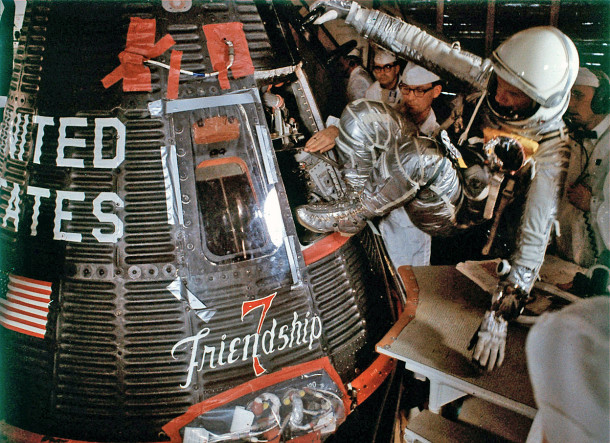
Fifty-nine years ago today, Project Mercury Astronaut John Herschel Glenn, Jr. became the first American to orbit the Earth. Glenn’s spacecraft name and mission call sign was Friendship 7.
Mercury-Atlas 6 (MA-6) lifted-off from Cape Canaveral’s Launch Complex 14 at 14:47:39 UTC on Tuesday, 20 February 1962. It was the first time that the Atlas LV-3B booster was used for a manned spaceflight.
Three-hundred and twenty seconds after lift-off, Friendship 7 achieved an elliptical orbit measuring 143 nautical miles (apogee) by 86 nautical miles (perigee). Orbital inclination and period were 32.5 degrees and 88.5 minutes, respectively.
The most compelling moments in the United States’ first manned orbital mission centered around a sensor indication that Glenn’s heat shield and landing bag had become loose at the beginning of his second orbit. If true, Glenn would be incinerated during entry.
Concern for Glenn’s welfare persisted for the remainder of the flight and a decision was made to retain his retro package following completion of the retro-fire sequence. It was hoped that the 3 flimsy straps holding the retro package would also hold the heat shield in place.
During Glenn’s return to the atmosphere, both the spent retro package and its restraining straps melted in the searing heat of re-entry. Glenn saw chunks of flaming debris passing by his spacecraft window. At one point he radioed, “That’s a real fireball outside”.
Happily, the spacecraft’s heat shield held during entry and the landing bag deployed nominally. There had never really been a problem. The sensor indication was found to be false.
Friendship 7 splashed-down in the Atlantic Ocean at a point 432 nautical miles east of Cape Canaveral at 19:43:02 UTC. John Glenn had orbited the Earth 3 times during a mission which lasted 4 hours, 55 minutes and 23 seconds. In short order, spacecraft and astronaut were successfully recovered aboard the USS Noa.
John Glenn became a national hero in the aftermath of his 3-orbit mission aboard Friendship 7. It seemed that just about every newspaper page in the days following his flight carried some sort of story about his historic feat. Indeed, it is difficult for those not around back in 1962 to fully comprehend the immensity of Glenn’s flight in terms of what it meant to the United States.
John Herschel Glenn, Jr. passed away on 08 December 2016 at the age of 95. His trusty Friendship 7 spacecraft is currently on display at the Smithsonian National Air and Space Museum in Washington, DC.
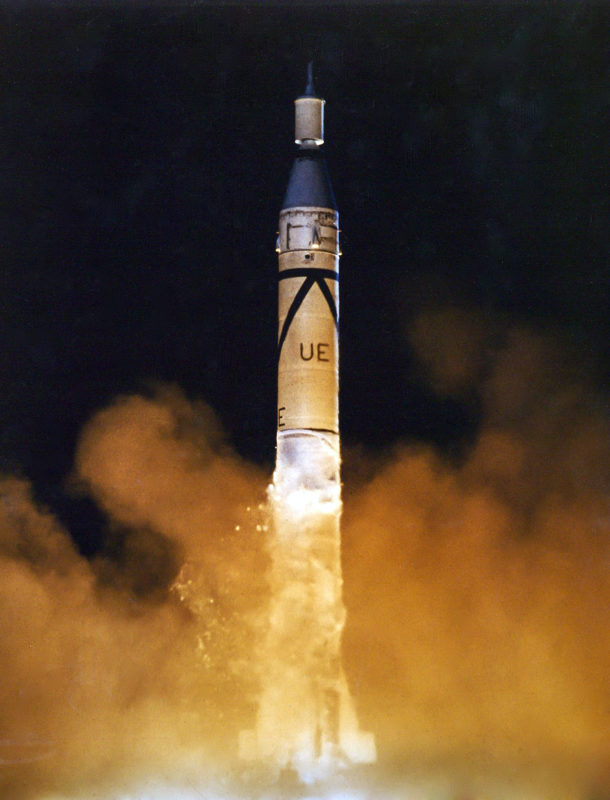
Sixty-two years ago to the day, the United States successfully orbited the country’s first space satellite. Known as Explorer I, the artificial moon went on to discover the Van Allen Radiation Belts, the extensive system of charged particles trapped in the magnetosphere that surrounds the Earth.
The Explorer I satellite was designed and fabricated by the Jet Propulsion Laboratory (JPL) under the direction of Dr. William J. Pickering. The satellite’s instrumentation unit measured 37.25 inches in length, 6.5 inches in diameter, and had a mass of only 18.3 lbs. With its burned-out fourth stage solid rocket motor attached, the total on-orbit mass of the pencil-like satellite was 30.8 lbs.
Explorer I was launched aboard a Jupiter-C (aka Juno I) launch vehicle from LC-26 at Cape Canaveral, Florida on Friday, 31 January 1958. Lift-off at occurred at 22:48 EST (0348 UTC). With all four stages performing as planned, Explorer I was inserted into a highly elliptical orbit having an apogee of 1,385 nm and a perigee of 196 nm.
Arguably the most historic achievement of the Explorer I mission was the discovery of a system of charged particles or plasma within the magnetosphere of the Earth. These belts extend from an altitude of roughly 540 to 32,400 nm above mean sea level. Most of the plasma that forms these belts originates from the solar wind and cosmic rays. The radiation levels within the Van Allen Radiation Belts (named in honor of the University of Iowa’s Dr. James A. Van Allen) are such that spacecraft electronics and astronaut crews must be shielded from the adverse effects thereof.
Explorer I operational life was limited by on-board battery life and lasted a mere 111 days. However, it soldiered-on in orbit until reentering the Earth’s atmosphere over the Pacific Ocean on Tuesday, 31 March 1970. During the 147 months it spent in space, Explorer I orbited the Earth more than 58,000 times. Data obtained and transmitted by the satellite contributed markedly to mankind’s understanding of the Earth’s space environment.
Perhaps the greatest legacy of Explorer I was that it was the first satellite orbited by the United States. Unknown to most today, this accomplishment was absolutely vital to America’s security, and indeed that of the free world, at the time. The Soviet Union had been first in space with the orbiting of the much larger Sputnik I and II satellites in late 1957. However, Explorer I showed that America also had the capability to orbit a satellite. History records that this capability would quickly grow and ultimately lead to the country’s preeminence in space.
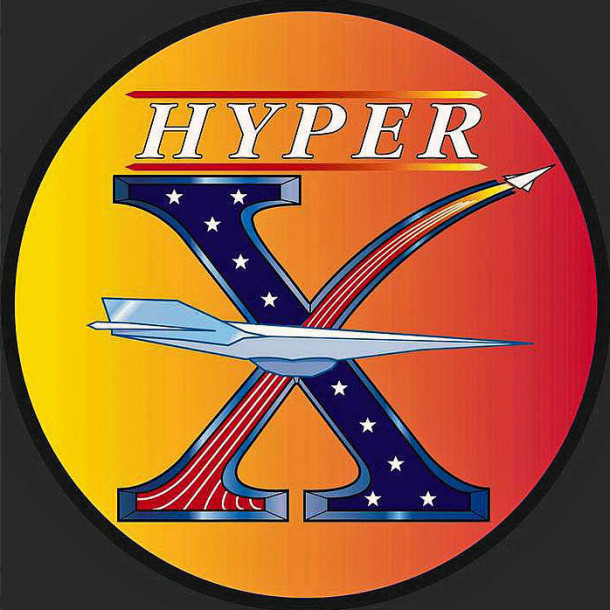
Fifteen years ago today, the NASA X-43A scramjet-powered flight research vehicle reached a record speed of over 4,600 mph (Mach 6.83). The historic test marked the first time in the annals of aviation that a flight-scale scramjet accelerated an aircraft in the hypersonic Mach number regime.
NASA initiated a technology demonstration program known as HYPER-X in 1996. The fundamental goal of the HYPER-X Program was to successfully demonstrate sustained supersonic combustion and thrust production of a flight-scale scramjet propulsion system at speeds up to Mach 10.
The scramjet is a key to sustained hypersonic flight within the earth’s atmosphere. Whereas rockets are capable of producing large thrust magnitudes, the amount of thrust per unit propellant mass is low. In part, this is because a rocket has to carry its own fuel and oxidizer. A scramjet is a much more efficient producer of thrust in that it only has to carry its fuel and uses the atmosphere as its oxidizer source.
Rocket technology is a highly developed discipline with a deep experience and application base. In contradistinction, flight-scale scramjet technology is still in a developmental stage. Considerations such as initiating and sustaining stable combustion is a supersonic stream, efficient conversion of fuel chemical energy to kinetic energy, and optimal integration of the scramjet propulsion system into a hypersonic airframe are among the challenges that face designers.
Also known as the HYPER-X Research Vehicle (HXRV), the X-43A aircraft was a scramjet test bed. The aircraft measured 12 feet in length, 5 feet in width, and weighed nearly 3,000 pounds. The X-43A was boosted to scramjet take-over speeds with a modified Orbital Sciences Pegasus rocket booster.
The combined HXRV-Pegasus stack was referred to as the HYPER-X Launch Vehicle (HXLV). Measuring approximately 50 feet in length, the HXLV weighed slightly more than 41,000 pounds. The HXLV was air-launched from a B-52 mothership. Together, the entire assemblage constituted a 3-stage vehicle.
The second flight of the HYPER-X program took place on Saturday, 27 March 2004. The flight originated from Edwards Air Force Base, California. Using Runway 04, NASA’s venerable B-52B (S/N 52-0008) started its take-off roll at approximately 20:40 UTC. The aircraft then headed for the Pacific Ocean launch point located just west of San Nicholas Island.
At 21:59:58 UTC, the HXLV fell away from the B-52B mothership. Following a 5 second free fall, rocket motor ignition occurred and the HXLV initiated a pull-up to start its climb and acceleration to the test window. It took the HXLV about 90 seconds to reach a speed of slightly over Mach 7.
Following rocket motor burnout and a brief coast period, the HXRV (X-43A) successfully separated from the Pegasus booster at 94,069feet and Mach 6.95. The HXRV scramjet was operative by Mach 6.83. Supersonic combustion and thrust production were successfully achieved. Total power-on flight duration was approximately 11 seconds.
As the X-43A decelerated along its post-burn descent flight path, the aircraft performed a series of data gathering flight maneuvers. A vast quantity of high-quality aerodynamic and flight control system data were acquired for Mach numbers ranging from hypersonic to transonic. Finally, the X-43A impacted the Pacific Ocean at a point about 450 nautical miles due west of its launch location. Total flight time was approximately 15 minutes.
The HYPER-X Program made history that day in late March 2004. Supersonic combustion and thrust production of an airframe-integrated scramjet were achieved for the first time in flight; a goal that dated back to before the X-15 Program. Along the way, the X-43A established a speed record for airbreathing aircraft and earned a Guinness World Record for its efforts.
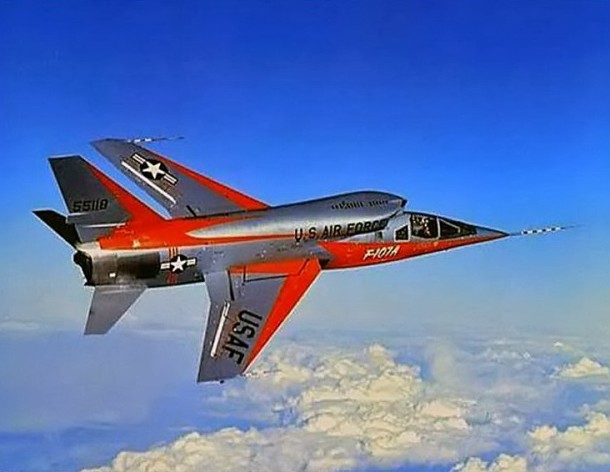
Fifty-nine years ago this month, the USAF/North American F-107A aircraft flew for the first time. The Mach 2-capable fighter-bomber went supersonic on the type’s maiden flight.
The F-107A was designed, developed and tested by North American Aviation (NAA) in the mid-1950’s. With it, the contractor hoped to satisfy Tactical Air Command’s (TAC) need for a front line fighter-bomber. However, Republic Aircraft also had a candidate for the same role; the F-105 Thunder Chief.
The competition between Republic and North American for the TAC fighter-bomber production contract has a story of its own. Suffice it to say here that the competitive effort was (1) extremely close and (2) tinged with political intrigue. In the end, Republic Aircraft reaped the spoils of victory.
Although the F-107A came out on the short end of the stick in the TAC fighter-bomber competition, such did not imply an inferiority in fulfilling the intended role. Indeed, like the Northtrop YF-23’s loss to the General Dynamics YF-22 in the ATF competition of the early 1990’s, North American’s failure to get the nod with the F-107A is still a subject of passionate debate.
The F-107A measured 60.8 feet in length and had a wing span of 36.6 feet. Gross take-off weight was around 41,000 pounds. The aircraft was powered by a single Pratt and Whitney YJ75-P-11 turbojet that produced 15,500 pounds of thrust in military power and 23,500 pounds of thrust in full afterburner.
F-107A longitudinal control was provided by an all-flying horizontal tail. Similarly, an all-flying vertical tail was employed for directional control. Lateral control was provided by a unique 3-segment spoiler-deflector system mounted on each wing. The aircraft was also configured with inboard flaps and leading edge slats for lift augmentation at low speeds.
A unique and prominent feature of the F-107A was its dorsal-mounted air induction system known as the Variable-Area Inlet Duct (VAID). Internally, this unit incorporated a system of adjustable ramps to efficiently decelerate and compress freestream prior to entering the engine compressor face. Ramp deflection scheduling with Mach number was controlled automatically. Ramp boundary layer bleed air was vented from the top of the VAID.
The F-107A carried weapons externally. In addition to wing pylon-mounted stores, the aircraft was designed to carry a single “special weapon” from a semi-submerged recess located on the aircraft ventral centerline. The term “special weapon” means that it was a tactical nuclear bomb. The Sandia-developed store could also be used in combination with a special saddle fuel tank to extend the aircraft’s combat range.
A total of three (3) F-107A aircraft were built and flown. USAF-assigned tail numbers include 55-5118, 55-5119 and 55-5120. On Monday, 10 September 1956, the No. 1 ship (55-5118) took-off from Edwards Air Force Base on its first flight. NAA Chief Test Pilot Robert Baker, Jr. was at the controls. The aircraft attained a maximum Mach number of 1.03 in a 43 minute flight test.
The F-107A could really scream. The type had a maximum climb rate of around 40,000 feet per minute in full afterburner. The maximum demonstrated Mach number attained by the F-107A was Mach 2.18. Program engineers estimated that by increasing the engine inlet area slightly, the F-107A was capable of reaching approximately Mach 2.4.
The trio of F-107A aircraft flew 272 flight tests totalling 176.5 hours. Included in this testing was successful separation of a special store prototype at Mach 2. Test pilots of note who flew the F-107A included XB-70A pilot Al White and X-15 pilots Scott Crossfield, Bob White, Jack McKay and Forrest Peterson.
Though it never became a production aircraft, the F-107A contributed in significant ways to aviation progress. Indeed, many future aircraft would greatly benefit from F-107A flight control and air induction technology including the A-5 Vigilante, XB-70A, A-12, SR-71, YF-12A and F-15.
The F-107A was the last of NAA’s fighter aircraft which includes such notables as the P-51 Mustang, the F-86 Sabre and the F-100 Super Sabre. While the F-107A has often been referred to in print as the Ultra Sabre, Ultimate Sabre, Super Super Sabre or such, it was never officially assigned a nickname. Alas, there was never an XF-107A or YF-107A designation either. North American Aviation’s TAC fighter-bomber candidate was simply known as the F-107A.
Today, the No. 1 F-107A (55-5118) is displayed at the Pima Air and Space Museum (PASM) in Tucson, Arizona. The No. 2 ship (55-5119) resides at the USAF Museum at Wright-Patterson Air Force Base in Dayton, Ohio. The No. 3 airplane (55-5120) no longer exists as it was relegated to the status of a fire fighting prop and ultimately destroyed in that role sometime in 1961 or 1962.











